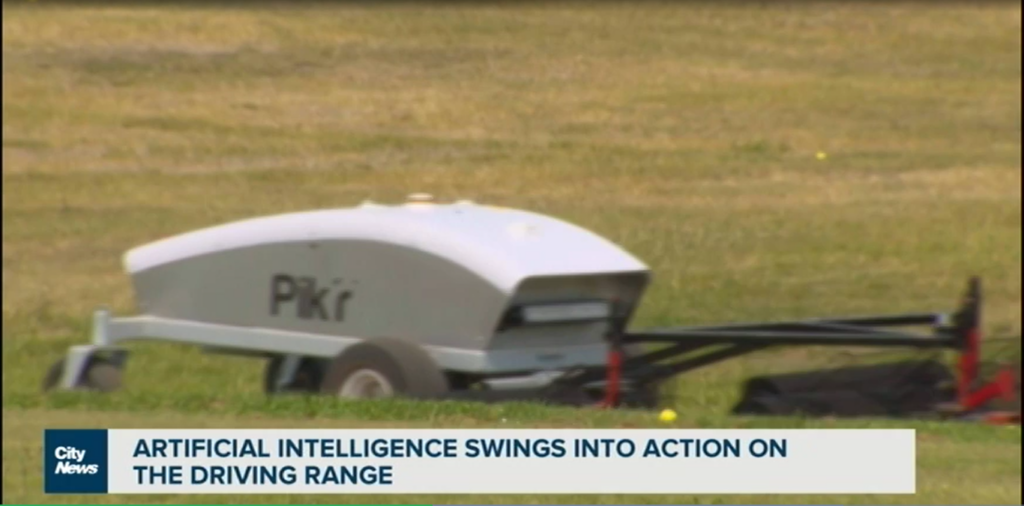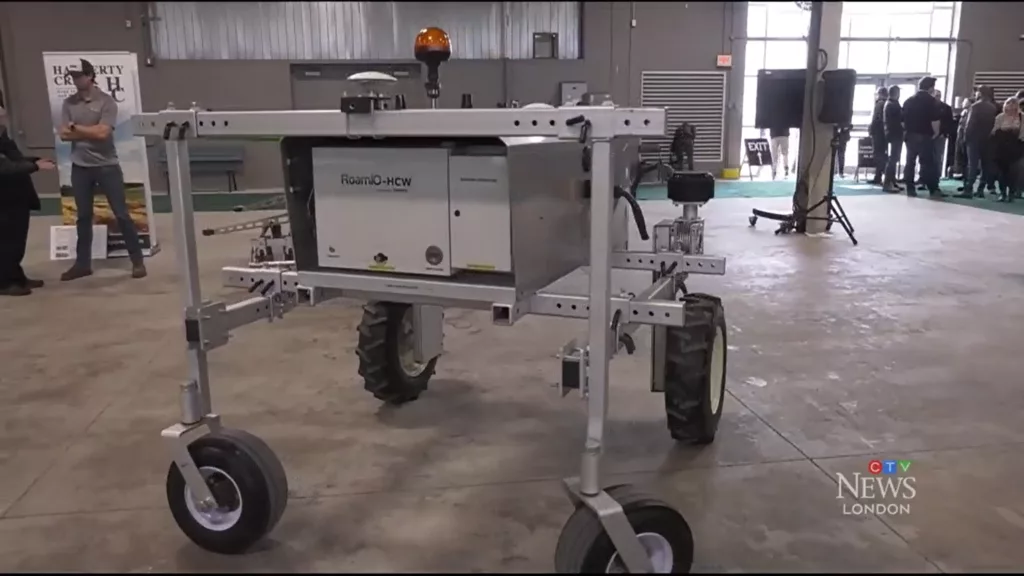Profiles
News & Media

2025/06 - The $50,000+ Robot Ball Collector Spotted On The US Open Driving Range At Oakmont
A range picker, or golf ball collector, is one of, arguably, the busiest jobs when it comes to a golf Major week, with hundreds of players taking to the range as they warm up ahead of a big championship.

2025/06 - The $50,000+ Robot Ball Collector Spotted On The US Open Driving Range At Oakmont
A range picker, or golf ball collector, is one of, arguably, the busiest jobs when it comes to a golf Major week, with hundreds of players taking to the range as they warm up ahead of a big championship.

2025/01 - GOLF COURSES OF THE FUTURE ARE HERE
From autonomous mowers to high-tech simulators, transformative innovations are making golf smater and more sustainable.
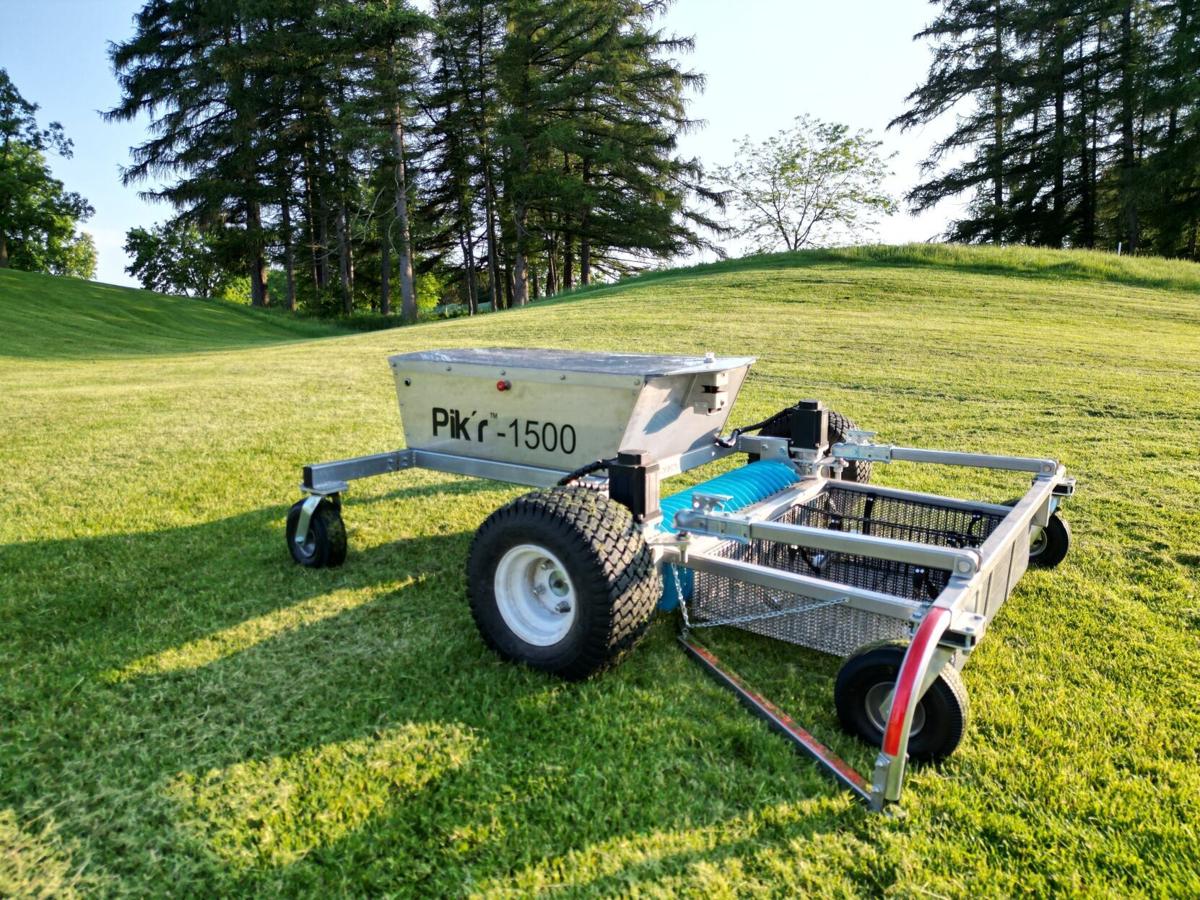
2024/07 - A robot developed in Hamilton is at the forefront of a driving range revolution
The Pik’r by Korechi Innovations is changing the way ranges operate on some of the biggest stages in golf. It was a triumphant return of sorts for Sougata Pahari as he watched his invention put on a show on the Hamilton Golf and Country Club driving range at last month’s RBC Canadian Open.
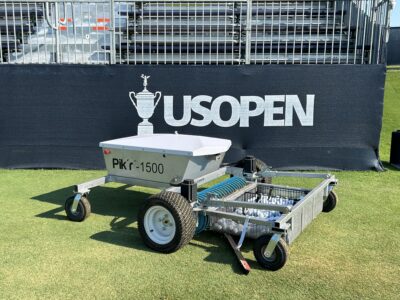
2024/06 - Korechi Innovations’ robot in action at the U.S. Open
As golf facilities worldwide face staffing shortages, the Pik'r offers a sustainable solution to the labor-intensive task of range picking.
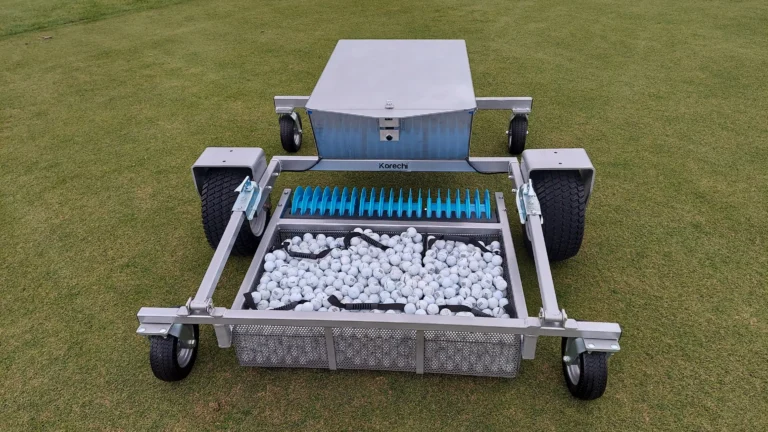
2024/06 - Autonomous ball-retrieving robot deployed at US Open
At the 124th US Open at Pinehurst Resort, a new robotic solution for picking up golf balls has been debuted by creators Korechi Innovations (Korechi). The Pick’r-1500, a golf ball retriever, was deployed on the newly converted Cradle 9-hole course. The Ontario-based company designed the Pick’r-1500 for rugged terrain. With a durable steel frame and a thick stainless-steel shell, the robot is built to withstand the harsh conditions of a professional practice range.

2024/06 - Pik’r-1500 Golf Ball Picking Robot
Robots are already capable of doing many things for us, including picking golf balls. Take the Pik’r for instance. It is a golf picking robot with high capacity and collision avoidance. The Pik’r-1500 is designed for rough terrains. It has a steel frame and stainless steel shell. It comes with GPS and can pick up 1000s of balls.

2024/06 - Korechi Innovations Pik’r-1500 robot retrieves golf balls at the U.S. Open
While the 124th U.S. Open is all about human talent, skill, and composure under competitive pressure, robots are finding their place. As golfers practice their drives on the newly converted Cradle 9-hole course at Pinehurst Resort, the new Pick’r robot from Korechi Innovations Inc. is safely and efficiently retrieving balls.
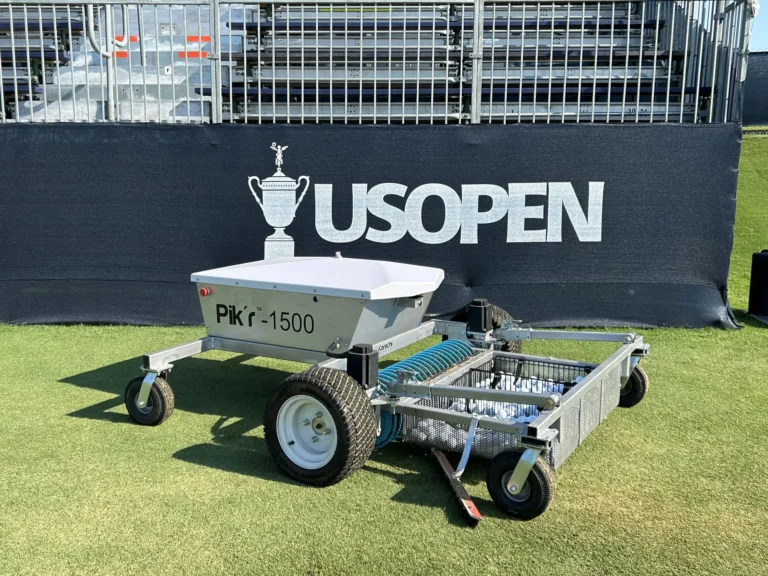
2024/06 - PRESS RELEASE: Pik'r Range Picking Robot Enhances U.S. Open Experience at Pinehurst
Oshawa, Ontario – Korechi Innovations Inc. proudly introduces its autonomous robotic golf ball picker, the Pik’r-1500, now operational at the prestigious 124th U.S. Open at Pinehurst Resort. As golfers perfect their drives on the newly converted Cradle 9-hole course, the Pik’r robot is enhancing the efficiency and safety of golf ball retrieval.

2023/08 - Farmtario: Autonomous farming showcase returns to show
When Haggerty AgRobotics Company Ltd. presented its autonomous solutions at the 2022 show, interest from industry, farmers and the media was exceptional. The demand for farm labour and the challenge to find workers is driving development of autonomous farm equipment. Chuck Baresich, founder and president of Haggerty AgRobotics, has been collaborating with agriculture technology companies around the world to bring their technology to Canada to test.

2023/08 - Forbes : Canadian Robot Revs Up Driving Range Efficiency
Collecting golf balls on a driving range is a Sisyphean task that consumes hours each day. But maintaining a steady supply is vital—run out of orbs and the whole operation grinds to a halt.
A Toronto area agri-tech player has come up with a way to ease this pain point. Korechi Innovations, a farming robot manufacturer, has broken into the golf industry with Pik'r, an autonomous range picking solution.

2023/07 - Spark Centre : Tired of Retrieving Golf Balls? There’s a Robot For That.
The Pik’r is the first heavy-duty, high-capacity autonomous robot dedicated to golf ball retrieval for various golf facilities, from busy driving ranges to high-end private golf country clubs. The Pik’r automates existing three and five-gang golf ball pickers, can pick up ten times more balls than its competitors and is available on a service rental model with the option to buy five or more units. This robot has become in high demand across North America and Europe. The 2023 RBC Canadian Open used Pik’r to pick up the balls at their practice facility, which was featured in a PGA Tour video that has been watched more than three million times.
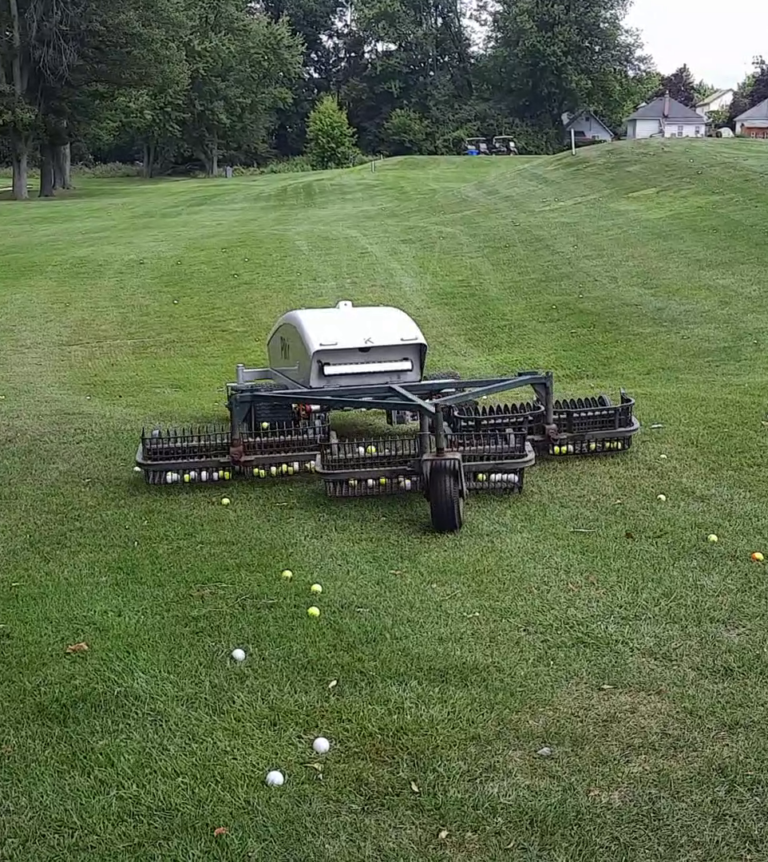
2023/07 - Golf Industry Network : Canadian Technology Advances in the Sport of Golf
When we think of technological advances in golf we usually think of drivers, irons, putters or even golf balls. Seldom, if ever, do we associate technological advances in the sport with how we pick up balls off the driving range or how golf carts are powered. Yet, that’s what’s happening right now in golf in Canada and beyond, as the robot Pik’r and the solar powered SunRunner golf cart are creating a buzz. Here’s the story of these two Canadian made innovations.
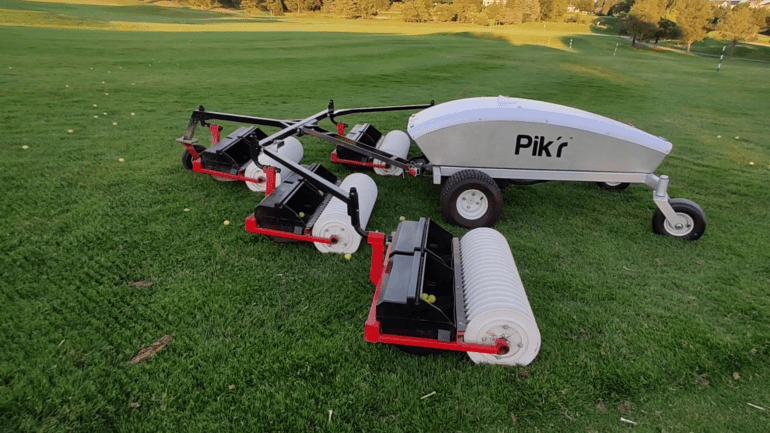
2023/06 - MultiPlatform.ai: Revolutionizing Golf with Artificial Intelligence: Meet the Golf Ball Picking Robots (Video)
Prepare to be amazed as artificial intelligence takes center stage on the golf course! Experience the cutting-edge technology of golf ball picking robots, empowered by advanced AI systems, as they revolutionize the game. These innovative robots are making their debut at various golf courses and driving ranges throughout the Greater Toronto Area (GTA), signaling a new era in golfing technology.
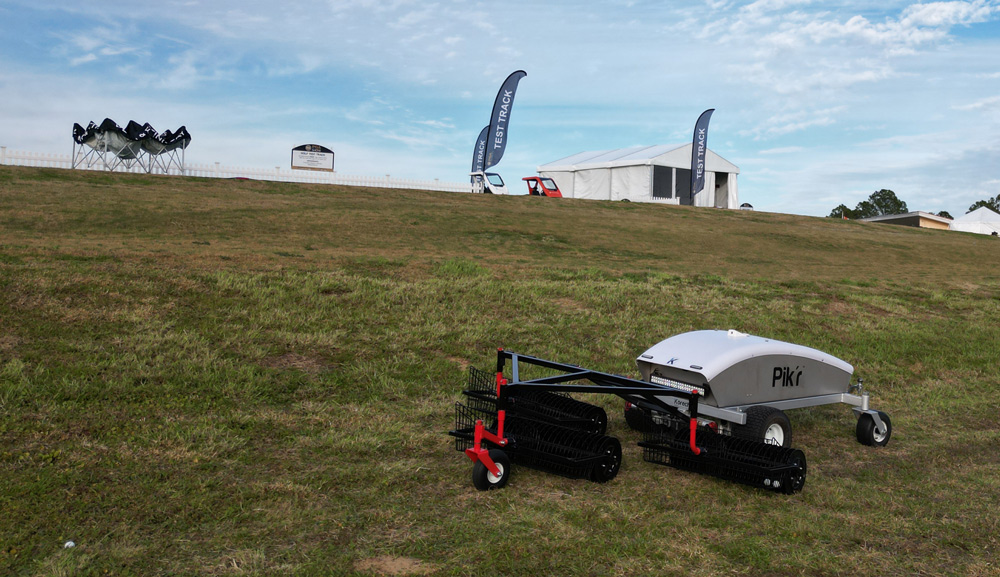
2023/04 - Invest Durham: Meet the founders of Durham Region's leading agri-tech companies
Durham Region has a strong centuries-old agricultural industry. However, these three agri-tech companies—focusing on everything from robotics to vertical farming—are innovating it.

2023/02 - PGA Show: New Exhibitors You Can’t Miss
Every year, the latest and greatest in golf technology, apparel, and accessories debuts at the PGA Show. These are some of the exciting new exhibitors who made their debut this year.

2023/01 - NASDAQ: First-Time Demonstration of High-Capacity, Heavy-Duty, Range-Picking Robot at PGA Show Demo Day, Korechi Innovations Aims to Save Labor and Energy
Oshawa, Ontario--(Newsfile Corp. - January 19, 2023) - Canada-based robotics and automation company, Korechi Innovations Inc., is all set to present the first-time demonstration of their high-capacity, heavy-duty, range-picking robot at the PGA Show Demo Day. During the demo and fitting day, scheduled to be held on January 24th at the Orange County National Golf Centre in Orlando, the company will present its unique autonomous range-picking robot, Pik'rTM.. The robot can also be seen at the exhibition between the 25th and 27th of January in the Inventors Spotlight zone at the Orange County Convention Center - West Concourse.

2023/01 - GLOBAL GOLF: Pro Tip: Highlights of the 2023 PGA Show
After a few years of uncertainty, the PGA Merchandise Show made its buzzy return in 2023, and the miles of aisles at the Orange County Convention Centre in Orlando featured plenty of great gear from the biggest brands in golf, and this year, perhaps more than ever, a lot of excitement from attendees who may not have seen each other in person since 2020. The show floor was packed with the usual hustle and bustle, and while there were plenty of great new products this year (including a Canadian invention, the Pik’r, which is set to revolutionize the way driving ranges are cleared with its autonomous robot picking solution) some of the big highlights came from the usual suspects.

2023/01 - BLOOMBERG: First-Time Demonstration of High-Capacity, Heavy-Duty, Range-Picking Robot at PGA Show Demo Day, Korechi Innovations Aims to
Oshawa, Ontario--(Newsfile Corp. - January 19, 2023) - Canada-based robotics and automation company, Korechi Innovations Inc., is all set to present the first-time demonstration of their high-capacity, heavy-duty, range-picking robot at the PGA Show Demo Day. During the demo and fitting day, scheduled to be held on January 24^th at the Orange County National Golf Centre in Orlando, the company will present its unique autonomous range-picking robot, Pik'r^TM.^. ^ The robot can also be seen at the exhibition between the 25^th and 27^th of January in the Inventors Spotlight zone at the Orange County Convention Center - West Concourse.

2023/01 - STREET INSIDER: First-Time Demonstration of High-Capacity, Heavy-Duty, Range-Picking Robot at PGA Show Demo Day, Korechi Innovations Aims to Save Labor and Energy
Oshawa, Ontario--(Newsfile Corp. - January 19, 2023) - Canada-based robotics and automation company, Korechi Innovations Inc., is all set to present the first-time demonstration of their high-capacity, heavy-duty, range-picking robot at the PGA Show Demo Day. During the demo and fitting day, scheduled to be held on January 24th at the Orange County National Golf Centre in Orlando, the company will present its unique autonomous range-picking robot, Pik'rTM.. The robot can also be seen at the exhibition between the 25th and 27th of January in the Inventors Spotlight zone at the Orange County Convention Center - West Concourse.

2023/01 - THE GOLF WIRE: INVENTORS SPOTLIGHT TO SHOWCASE INNOVATIVE GOLF PRODUCTS AT THE 2023 PGA SHOW IN ORLANDO
FRISCO, Texas (Jan. 4, 2023) – Inventors of new golf training and teaching aids, accessories and equipment will be able to gauge the interest of thousands of attending PGA Professionals, golf industry leaders and media from around the world at the Inventors Spotlight Exhibit Pavilion during the PGA Show, Jan. 24-27, 2023, in Orlando, Florida. More than 50 Inventors Spotlight exhibits will be presented at the 2023 PGA Show.

2023/01 - THE FIRST CALL: Pik’r is its name, range balls is its game
WINTER GARDEN, Florida — There were thousands upon thousands of balls, clubs and shafts at Tuesday’s 20th PGA Show Demo and Fitting Day to test and touch, and some of golf’s biggest stars such as Lexi Thompson made appearances for their respective brands. But leave it to a robot to grab some of the day’s spotlight. Its name is Pik’r, the world’s first heavy-duty, high-capacity robot that automates existing pickers at any driving range or practice facility — even on artificial turf.

2023/01 - SBJ Tech: PGA Show highlights new revenue-generating ideas
The annual PGA Show is always a breeding ground for innovative products and companies in the industry. Even though I’m not in Orlando for this week’s event, which began yesterday, the golf nut in me couldn’t resist exploring which up-and-coming technologies are being talked about this year.

2023/01 - First-Time Demonstration of High-Capacity, Heavy-Duty, Range-Picking Robot at PGA Show Demo Day, Korechi Innovations Aims to Save Labor and Energy
Oshawa, Ontario--(Newsfile Corp. - January 19, 2023) - Canada-based robotics and automation company, Korechi Innovations Inc., is all set to present the first-time demonstration of their high-capacity, heavy-duty, range-picking robot at the PGA Show Demo Day. During the demo and fitting day, scheduled to be held on January 24th at the Orange County National Golf Centre in Orlando, the company will present its unique autonomous range-picking robot, Pik'rTM.. The robot can also be seen at the exhibition between the 25th and 27th of January in the Inventors Spotlight zone at the Orange County Convention Center - West Concourse.

2023/01 - FIRST-TIME DEMONSTRATION OF HIGH-CAPACITY, HEAVY-DUTY, RANGE-PICKING ROBOT AT PGA SHOW DEMO DAY, KORECHI INNOVATIONS AIMS TO SAVE LABOR AND ENERGY
Oshawa, Ontario – Canada-based robotics and automation company, Korechi Innovations Inc., is all set to present the first-time demonstration of their high-capacity, heavy-duty, range-picking robot at the PGA Show Demo Day. During the demo and fitting day, scheduled to be held on January 24th at the Orange County National Golf Centre in Orlando, the company will present its unique autonomous range-picking robot, Pik’rTM.. The robot can also be seen at the PGA Show between the 25th and 27th of January in the Inventors Spotlight zone (Booth 4217) at the Orange County Convention Center – West Concourse.

2023/01 - First-Time Demonstration of High-Capacity, Heavy-Duty, Range-Picking Robot at PGA Show Demo Day, Korechi Innovations Aims to Save Labor and Energy
Oshawa, Ontario--(Newsfile Corp. - January 19, 2023) - Canada-based robotics and automation company, Korechi Innovations Inc., is all set to present the first-time demonstration of their high-capacity, heavy-duty, range-picking robot at the PGA Show Demo Day. During the demo and fitting day, scheduled to be held on January 24th at the Orange County National Golf Centre in Orlando, the company will present its unique autonomous range-picking robot, Pik'rTM. The robot can also be seen at the exhibition between the 25th and 27th of January in the Inventors Spotlight zone at the Orange County Convention Center - West Concourse.

2022/12 - SCORE GOLF: The 21st annual Younger Awards: Part IV
This is the fourth and final instalment of the 2022 Younger Awards. Here are the recipients for this year’s business story, research and development, executive, product, and golf brand of the year.

2022/11 - Robots… coming to a golf range near you
It appears modern technology is about to threaten another time-honoured golf tradition. Yes, the days of taking wicked pleasure from hitting the screen-enshrouded ball picker at the driving range may be numbered. (This pleasure intensified exponentially if you knew the person driving said picker.) This latest innovation is the Korechi Pik’r, an automated robot that hooks up to any existing golf ball picking unit.
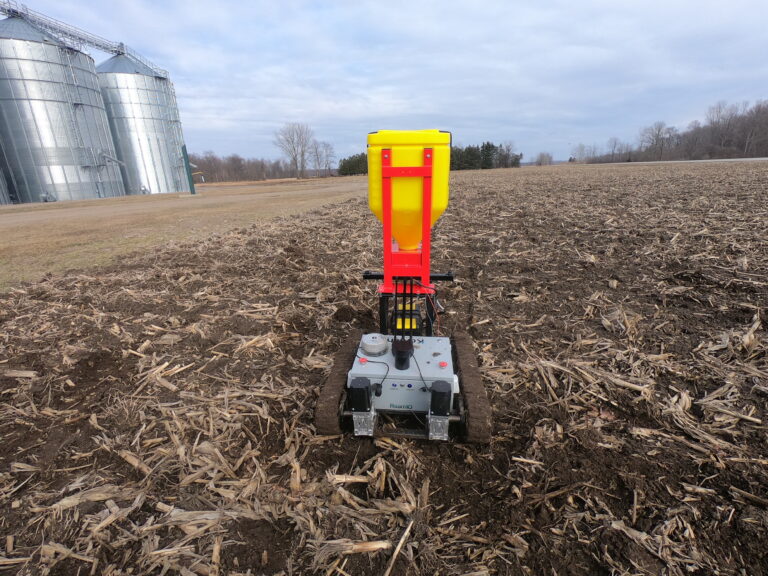
2022/11 - Robotics and the human factor: healthier food for consumers
What food we grow, trade, and eat is highly dependent on what we can profitably harvest, transport, and store, according to Sougata Pahari, CEO & Founder of Korechi Innovations in Canada. “Technology not only enables us to be more efficient in growing food (less water, chemicals, and fertilizer) but also to grow new or less-popular varieties, simply because they could be more labor-intensive,” he says. “The new generation of farming robots also tend to be electric, which helps with the reduction of GHG emissions. If we play our cards right, agriculture could go from being one of the worst emitters of GHG to a net carbon absorber.”
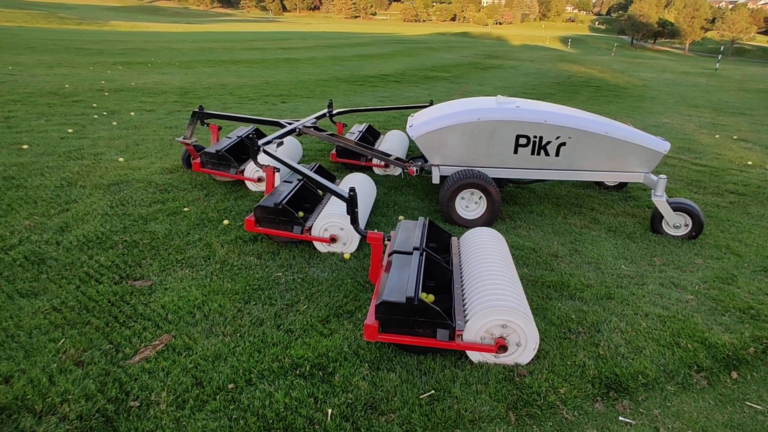
2022/10 - Pik’r set to revolutionize range operations
As important as the driving range is to course owners and golfers worldwide, there is one inescapable reality with respect to its operation: A range needs to be picked. Unlike balls at a bowling alley, those striped, yellow and white balls imprinted with PRACTICE on the side aren’t returned via conveyor belt.

2022/10 - FORBES: CROP ROBOTICS 2022, BEYOND THE VALLEY OF DEATH
Are we finally starting to see the adoption of labor-saving robots in agriculture? The short and unfulfilling summary answer is “It depends”. Undeniably, we are seeing clear signs of progress yet, simultaneously, we see clear signs of more progress needed.

2022/09 - INNOVATEON: Korechi HCW among leading-edge AgTech displays at Canada’s Outdoor Farm Show
Innovation Factory client, Korechi Innovations, will be showcasing their autonomous AgriTech RoamIO HCW with Haggerty AgRobotics at Canada’s Outdoor Farm Show this September. The mini farming tractor reduces the labour required for repetitive tasks through automation.

2022/09 - Korechi receives "Innovation Award" at Oshawa's 2022 Business Excellence Awards
Last week, the Greater Oshawa Chamber of Commerce conferred us with the "Innovation Award" during their 2022 Business Excellence Awards. Thank you GOCC, friends, advisors, customers and suppliers for supporting our team over the years! Elaine Popp, Sougata Pahari and Jim Clark at the Jubilee Pavilion, Oshawa.

2022/09 - Ontario start-up launches new robotic solutions for agriculture, golf
A high-capacity golf ball picking robot (Pik’rTM) is the latest release from Korechi Innovations Inc. , an Oshawa, Ontario-based robotics start-up. Korechi’s principal focus, however, has always been the farming sector and its dire need to find solutions to its growing labour problem.

2022/09 - Súlyos kérdések merültek fel a szántóföldi robotok használatával kapcsolatban
Szükség lesz egy robotflottára, mert egy robot nem tud mindent elvégezni. Ma már egyre gyakoribb, mondhatni, megszokott híranyag egy-egy új szántóföldi robot megjelenése, egy újabb típus fejlesztése. Azonban a piaci igények és a technikai evolúció hozta magával, hogy újabb és újabb kihívásokkal kell szembesülni mind az esetleges felhasználóknak, de legfőképpen a fejlesztőknek és gyártóknak.

2022/09 - Autonomous Agriculture Robots Market (New Edition: 2022 - 2028) Outstanding Growth in Industry for Up Coming Years: Naïo Technologies, Advanced Intelligent Systems Inc. (AIS), Korechi
Autonomous Agriculture Robots Market report forecast to 2022-2028 provides deep market insights to assist firms in making better business decisions and driving growth plans, based on prediction and market trends. The dynamic market structure, key players product offerings, their challenges, technical innovation, obstacles and barriers, information on communication and sales, sales by nation, risk, prospects, competitive landscape, growth strategy, and so on are all marketing variables covered in the study. It explores deeply into the present and emerging state of the industry. The study looks at a number of factors, including degrees of advancement, technological breakthroughs, and the various strategies used by the market's current major players.
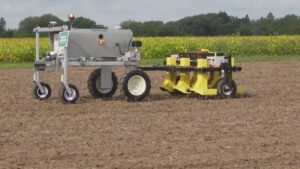
2022/09 - Farm show returns to big crowds and changing industry
For the first time since 2019, the agriculture industry gathered in Woodstock, Ont. for Canada’s Outdoor Farm Show. It is the largest show in the province, and crowds were bigger than expected. “All that pent up, whatever you want to call it, is here today and I think we're pretty excited now that they’re here. Just to be able to celebrate the industry.” said Doug Wagner, president of the show.
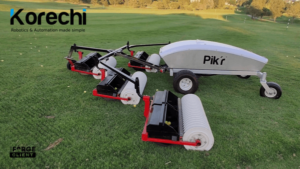
2022/09 - Autonomous golf ball picker just made driving range operations more profitable
Korechi Innovations Inc. has developed and launched Pik’r™, a robot that can automate existing golf ball pickers, reducing manual labour on busy driving ranges.
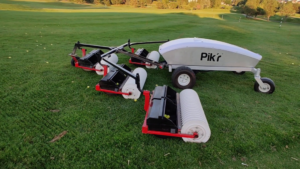
2022/09 - Korechi Inovation Inc. enter the golf market with a first of it’s kind ball picker robot.
In end of 2019 Korechi asked me for some input in a potential ball picking robot, and today, we get to see the result of Canada based company. The Pik’R. As the name suggest it, the Pik’R is a ball picking dedicated robot, but with one little twist. It uses your existing ball collector. This makes it very cost effective and easy to integrate in your facility.

2022/09 - PRESS RELEASE: Korechi Announces the Pik’r™ - a High-Capacity Golf Ball Picking Robot
We have recently launched our new golf ball picking robot with industry-leading features and capabilities - the Pik'r. The Pik’r™ works with all industry-accepted pickers, the first in the market to do so, and autonomously navigates the driving range using high precision GNSS RTK. It is designed for large driving ranges, the needs of which existing automation products cannot fulfill. Here's a video of the Pik'r in operation: https://youtu.be/k-wdbmtRPog. Read the full press release here.

2022/09 - Korechi introduces fast, efficient robotic golf-ball collector for driving ranges
Oshawa, Ontario, Canada – Korechi Innovations Inc., an innovator in the agricultural robotics space, in business since 2016, has announced their latest autonomous robot, the Pik’r™. Korechi brings the advanced capabilities of their RoamIO line of farming robots into the Pik'r™, which is the world's first robot that automates all existing 3 and 5 gang golf ball pickers in the market without any modifications to them. It also has higher coverage (up to 7 acres/hr) and picking capacity (up to 4000 balls per round) than any golf or driving range robot in the market and it is intended for larger and busier driving ranges where 15,000 or more balls are hit a day.

2022/08 - Aerial and Automation AgTech Available at Canada’s Outdoor Farm Show
The president of Canada’s Outdoor Farm Show encourages farmers to come see new options at the show that can revolutionize their farm. WOODSTOCK - Canada’s Outdoor Farm Show has released some information about their AgTech displays. Eastern Canada’s largest outdoor farm show will take place in the field at Discovery Farm Woodstock from September 13-15, and will showcase aerial agriculture technology and agricultural automation.
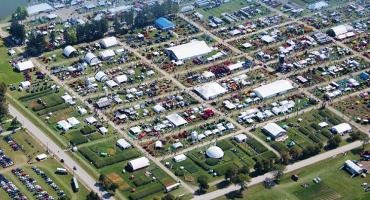
2022/08 - Robotics and helicopter demo will be featured at Canada’s Outdoor Farm Show
A focus on agricultural technologies will be highlighted at upcoming Canada’s Outdoor Farm Show on September 13-15, 2022. By Andrew Joseph, Farms.com; Image from Canada’s Outdoor Farm Show This year’s Canada’s Outdoor Farm Show will have a special focus on AgTech, with exhibitors primed to showcase leading-edge technology right in the field from September 13-15, 2022.

2022/08 - KORECHI HCW AMONG LEADING-EDGE AGTECH DISPLAYS AT CANADA’S OUTDOOR FARM SHOW
Innovation Factory client, Korechi Innovations, will be showcasing their autonomous AgriTech RoamIO HCW with Haggerty AgRobotics at Canada’s Outdoor Farm Show this September. The mini farming tractor reduces the labour required for repetitive tasks through automation.

2022/09 - Robotics, helicopter demo among leading-edge AgTech displays at Canada’s Outdoor Farm Show
Woodstock, Ont., Aug 29, 2022 – Exhibitors at Canada’s Outdoor Farm Show with a special focus on AgTech are set to showcase leading-edge technology right in the field from September 13, 14 & 15, 2022. “The world of agriculture evolves at a rapid pace, and we will see many innovative products and equipment displayed at our show this year,” says Doug Wagner, president of Canada’s Outdoor Farm Show. “The last few years have seen enormous growth in the agriculture technology space, so it is important for us to have a special focus on the new and exciting technology that exists today.”

2022/08 - Expo-Champs: surprising demonstrations to be expected
Fans of commented demonstrations will be spoiled this year. They will have the opportunity to see six types of robots and ten combo seeders for cover crops in action. Indeed, the commented demonstrations, presented by Le Bulletin des agricole, allow each year to watch the machines at work, to compare the equipment and to discuss with the manufacturers. A unique opportunity to learn more about robots and combo seeders, in the ideal outdoor setting of Expo-Champs.

2022/06 - AgRobotics in Ontario
What a challenging-few-years the agriculture sector and the world has had. But challenges pave the way for opportunities. And there are opportunities abound in the AgRobotics space. What is the problem you are trying to solve? Likely, there is a company somewhere in the world trying to solve it.

2022/05 - Celebrating Innovation: Korechi Innovations Inc.
Canadian Innovation Week is a 5-day celebration recognizing and supporting Canadian innovators and innovations that are changing the world one idea at a time. To celebrate, Spark Centre is sharing stories about our innovative clients, like Korechi Innovations Inc., whose ingenuity has advanced the agriculture and golf industries.
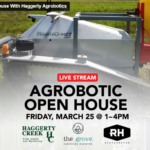
2022/03 - AgRobotics Open House With Haggerty Agrobotics
The Grove at Western Fair District is pleased to announce the successful collaboration of three local agri-business entities to host an Agrobotic Open House for farmers in Southwestern Ontario.

2022/03 -Robotics ROI could edge out traditional implements for some operations
Agricultural robotics aim to do the jobs no person wants to do or the tasks that are simple but time-consuming. “We have to start automating tasks for two reasons,” said Sougata Pahari, CEO and founder of Korechi. “Somebody needs to work on the farm, but also this will draw new blood, fresh blood into the industry, which is very important.”

2022/03 - Bioenterprise Canada Announces Recipients of the Ontario Agri-Food Research Initiative Commercialization Stream
Bioenterprise Canada is pleased to announce the successful applicants of the Ontario Agri-Food Research Initiative (OAFRI) Commercialization Stream! More than 20 organizations have been selected to receive funding to conduct market validation and product development projects, and to bring those innovative solutions to the market. Not only will these projects strengthen Ontario’s agri-food sector, but they will also ensure Ontarians continue to have access to the safe, high-quality food the province is known for.
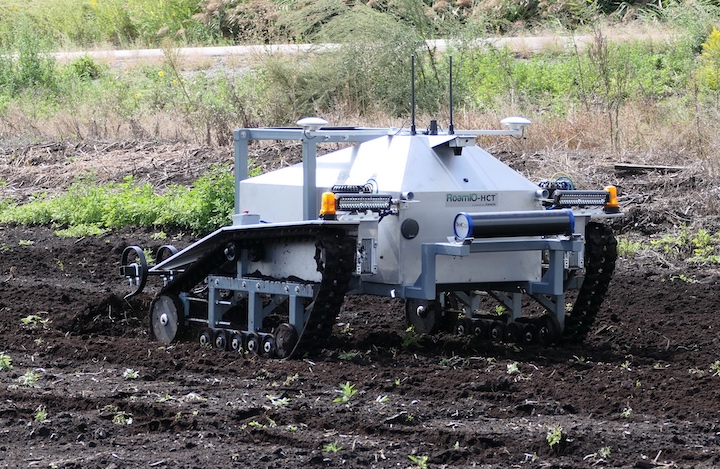
2022/01 - Robot agricoli, un futuro non poi così lontano
L'aggiornamento delle normative e lo sviluppo di soluzioni per l'aumento della sicurezza spianano la strada alla robotica che fa passi da gigante nei campi. Sono stati a lungo protagonisti di libri e film di fantascienza, ma ora i robot sono sotto i riflettori del mondo agricolo dove, negli ultimi anni, hanno fatto molta strada arrivando a svolgere le operazioni più disparate.
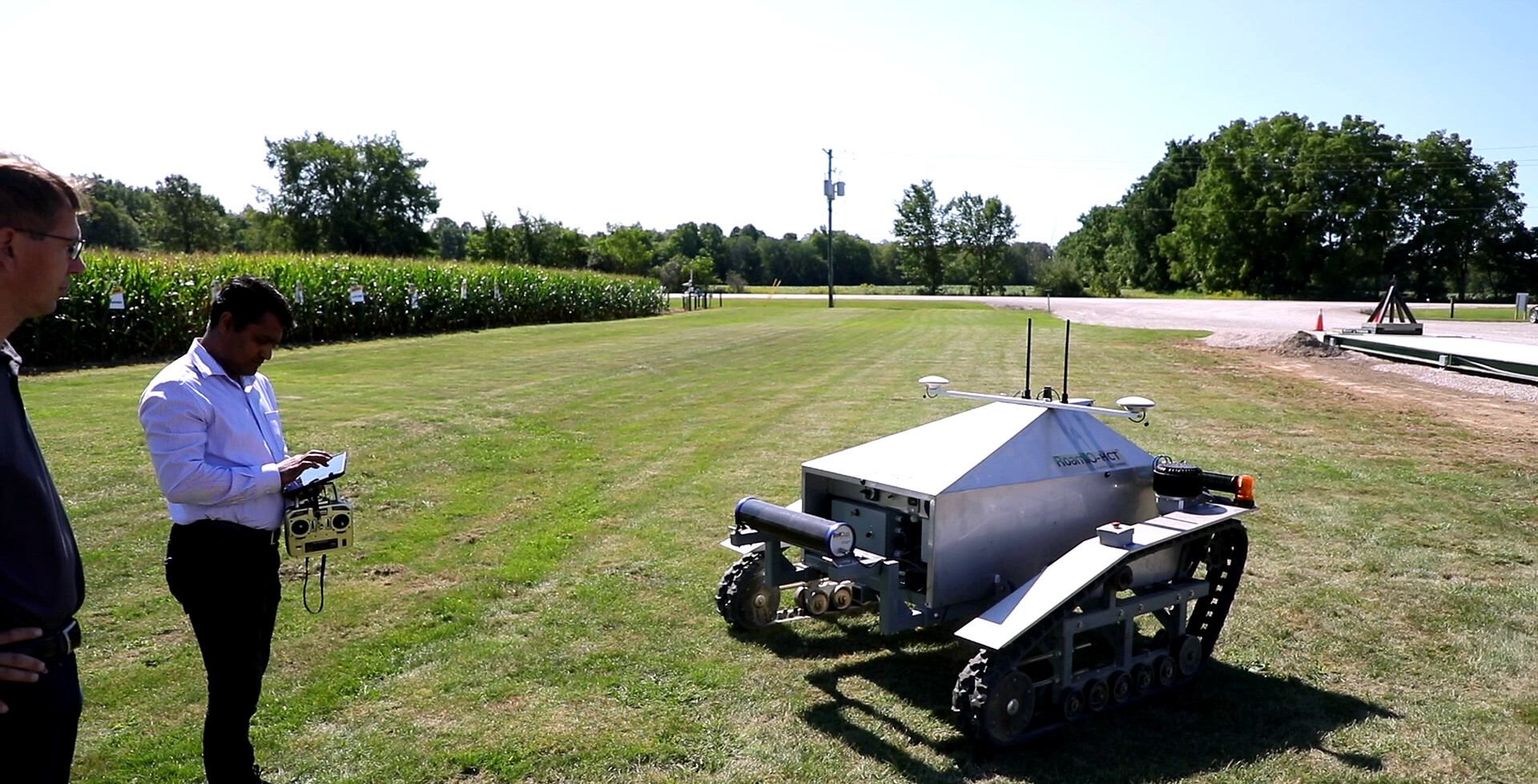
2022/01 - Agriculture and agri-food production are one of the top economic drivers for Durham Region. Careers in agriculture are essential to supporting our local economy and to feed our growing community.
There are plenty of opportunities for careers in the agri-food sector with three to four jobs waiting for every agriculture or agri-food related post-secondary graduate. In addition to skilled work in all fields of the agri-food sector, there are also numerous other opportunities including farm assistants, administrators, and small equipment operators.
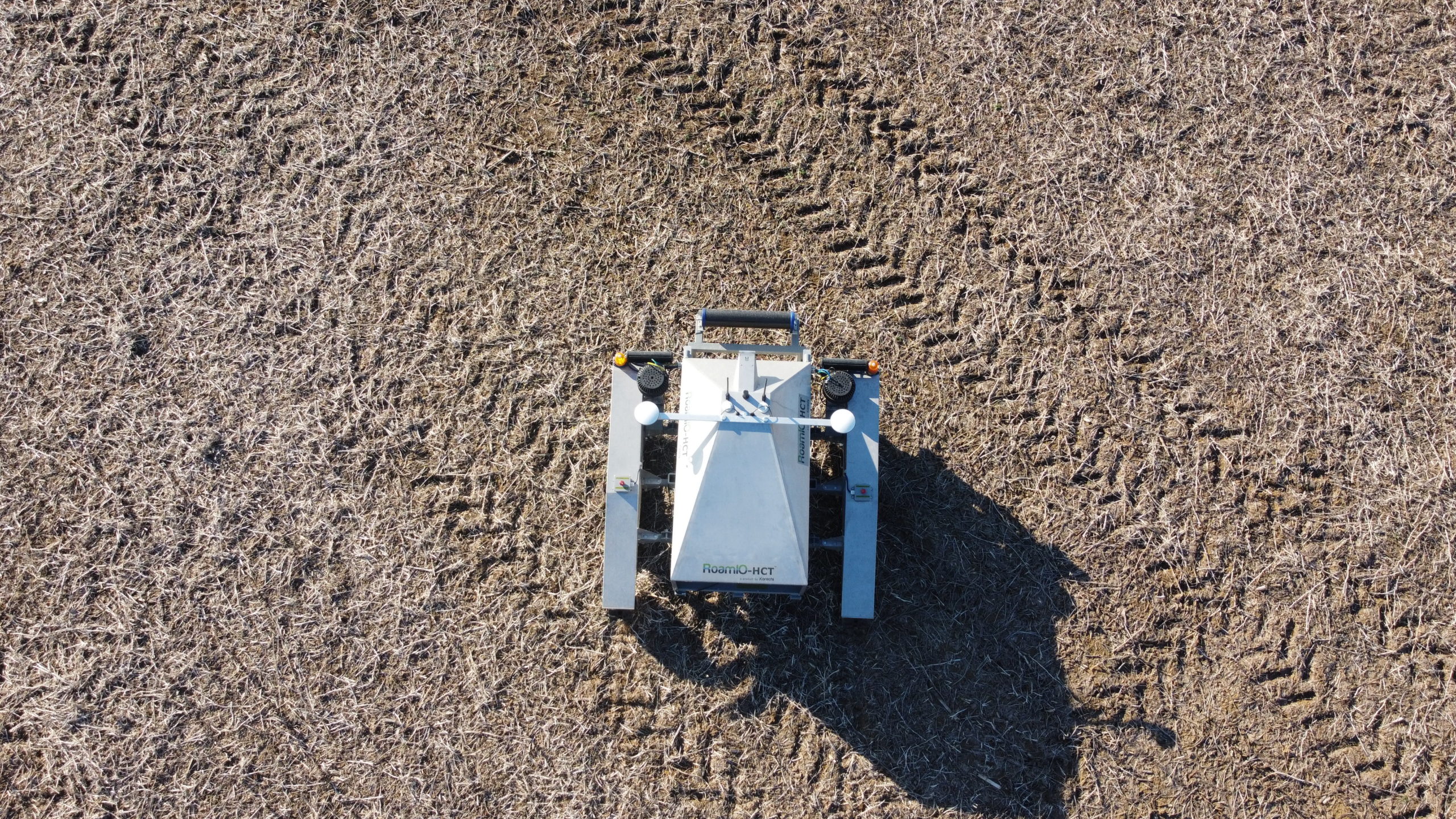
2021/12 - Autonomous Weeding - A year of Tests
Three autonomous weeding robots were put through the ringer in Ontario this year – and with good results. Overall, and despite occasional hiccups, those running the trials said the robots’ performance exceeded expectations.
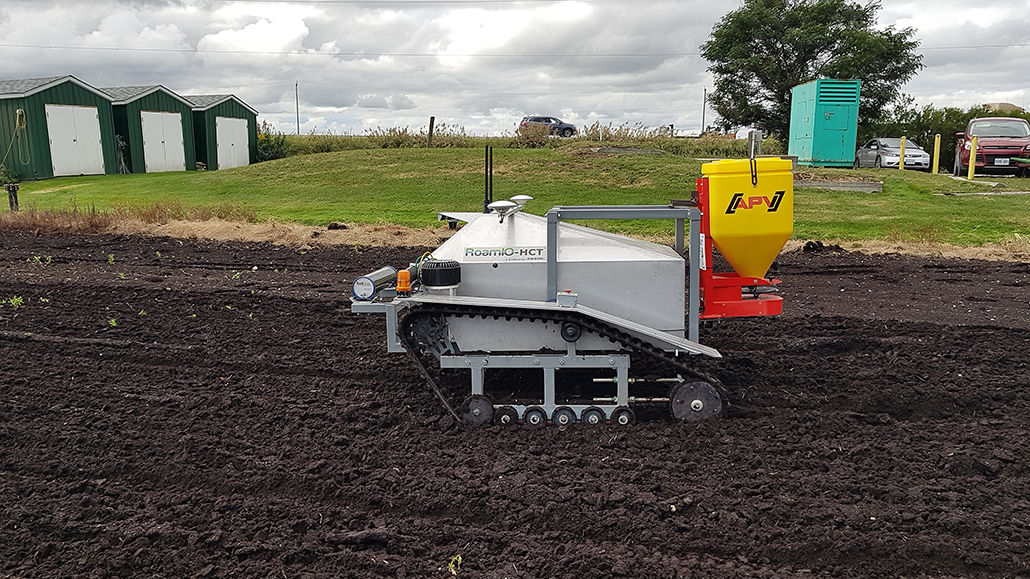
2021/11 Bringing robots to field crops
THE LATEST IN cutting-edge robotics is coming to a field near you — sooner than you think. A new team of in-field innovation enthusiasts have been working diligently over the past year to test, demonstrate, and troubleshoot robotic applications in a variety of Ontario crops, bringing the reality of robots within reach for farmers within this decade.

2021/08 - The Future of Farming: Autonomous Robots
There is no question that technology plays a major role in farming all across Ontario. Whether it be robotic milkers, driverless farm machinery, or drones, farms are becoing increasingly reliant on technology. Sougata Pahari, Founder & CEO of Korechi Innovations, joins us to discuss how his company is using robots to automate many repetitive and sometimes unsafe farm tasks.

2021/06 - How one founder turned a challenging personal experience into a game-changing innovation for farmers.
There is no question that farming is an exceptionally labor-intensive operation, and one with high price tags. Debt and mental health issues run rampant as farmers deal with major stressors outside of their control, from unpredictable weather to stringent government regulation and market volatility.
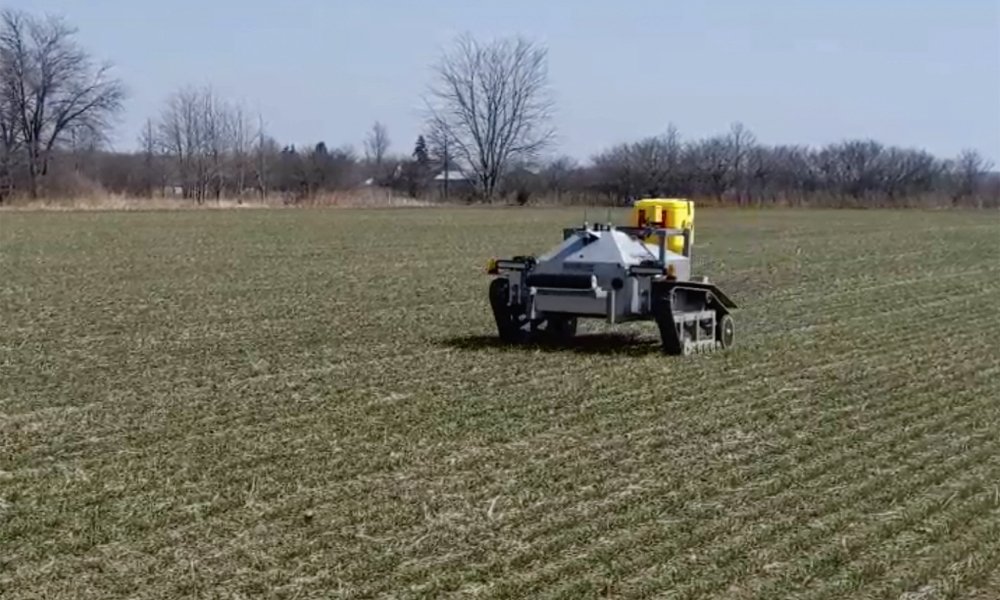
2021/05 - Farm automation likely adopted in high-value crops first
Several farm robots featured at the recent AgRobotics and Automation event hosted by the RH Accelerator focused on higher-value crops instead of corn, soybeans or wheat.
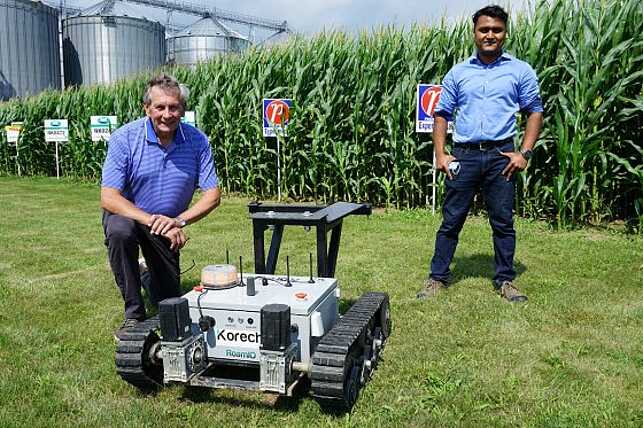
2021/01 - GreenWorks: Autonomous Robot Improves Employee Efficiency
Already owners of a DOT Power-Platform, operations manager Chuck Baresich says the company’s new investment in a RoamIO autonomous robot is specifically intended to help employees accomplish more in less time. “We wanted this robot because every year we have a range of small monotonous tasks that just don’t get done,” says Baresich. “My vision is RoamIO becomes a partner unit to our employees that can increase the productivity of existing staff. It takes some skill to work, so its augmenting skilled workers ability to get things done.” The RoamIO robot is separate unit from any attachment. The steel rack shown on the current prototype was added at Haggerty Creek to hold an optical soil sensor and hopper for cover crop seeding. – Photo: Matt McIntosh
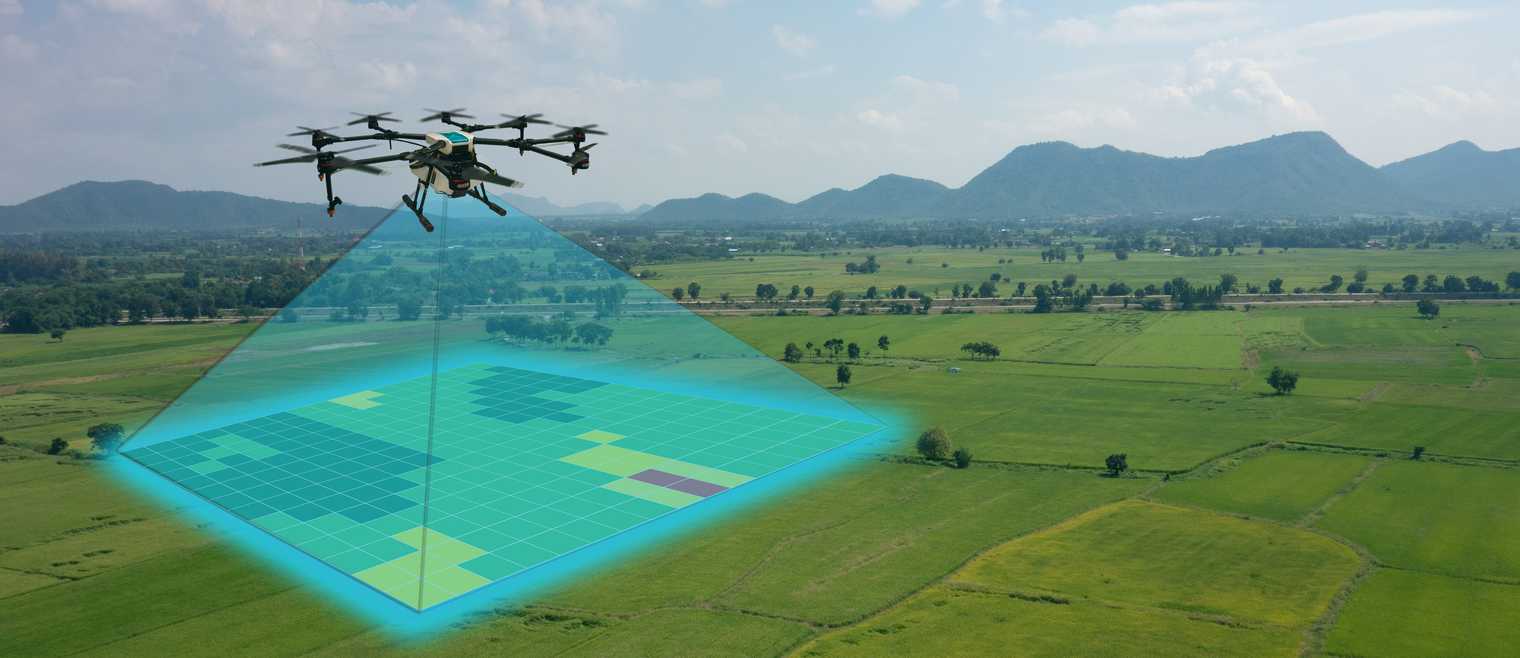
2020/12 - Futura Sciences: Reportage au Fira 2020 : l'avenir des robots est dans l'agriculture !
Chaque année, le secteur de la robotique agricole se rencontre lors d'un événement dédié : Fira. Pour sa cinquième édition, Fira 2020 s'est dématérialisé dans un salon immersif. Conférences, tables rondes, ateliers et démonstrations se sont suivies du 8 au 10 décembre pour dévoiler les changements de pratiques à l'œuvre dans l'agriculture. Reportage.

2020/12 - Quattro robot per il vigneto: scopriamoli insieme
Durante il Fira 2020, la fiera dedicata all'automazione in agricoltura, sono stati presentati quattro robot dedicati alle operazioni in vigneto. Fino a pochi anni fa pensare ad un robot che si muoveva all'interno di un vigneto sembrava una idea strampalata. E invece, durante Fira, la fiera dedicata alla robotica che si tiene ogni anno in Francia, sono stati presentati ben quattro robot, di cui tre sono già in fase commerciale e possono già essere acquistati ed utilizzati in campo.
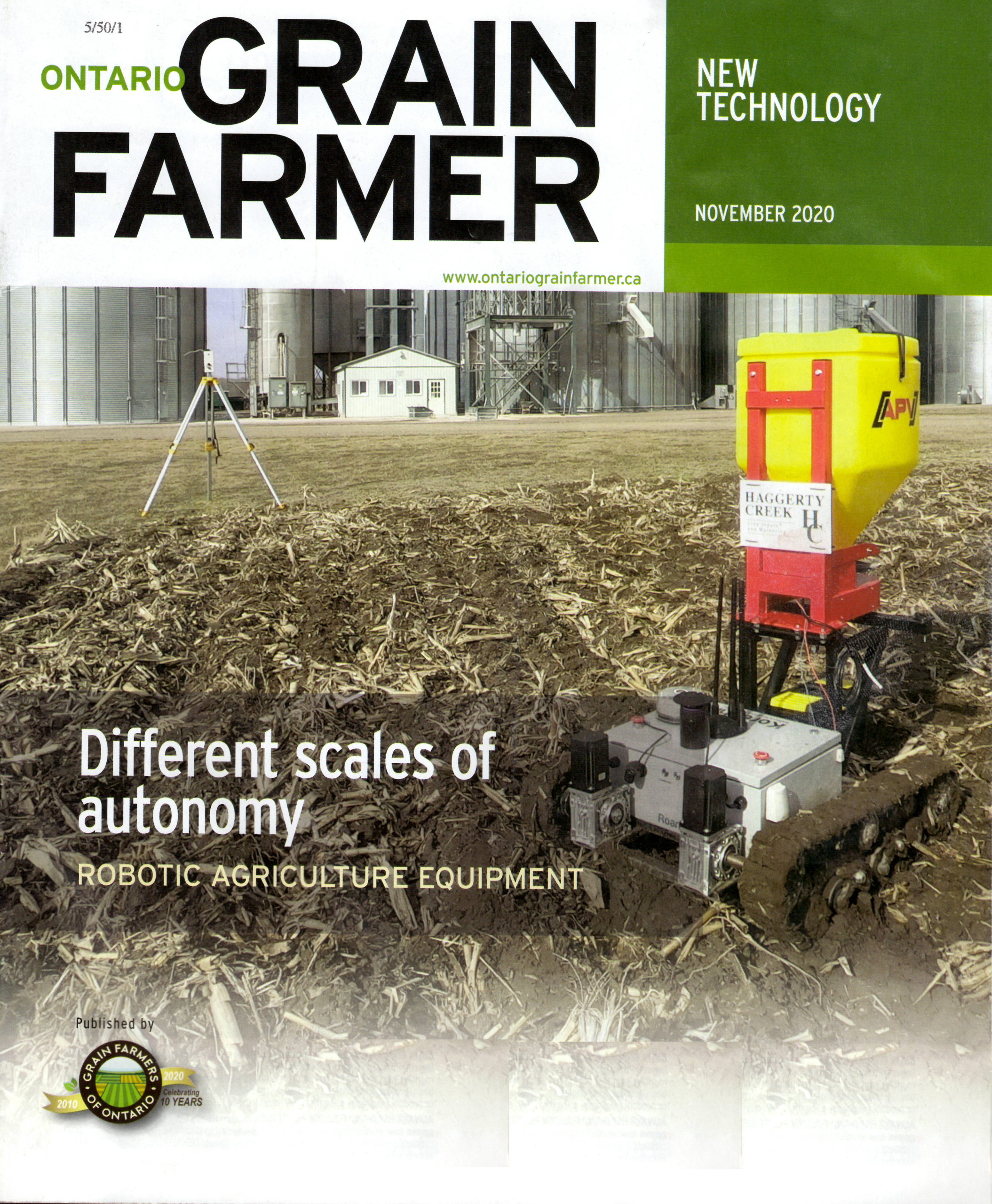
2020/11 - Different Scales of Autonomy
LARGE ROBOTS MIGHT look flashy, but farmers and ag-service providers are finding value in autonomous equipment on smaller and medium scales. Where investments in autonomy are made, however, is determined by the job. Here are a few examples of how autonomous technologies are being employed around the globe.

2020/10 - Updated robot roams French vineyards
There are 23 autonomous robots like this working the soil and weeding in French vineyards. Manufacturer Naio Technologies, which recently unveiled an updated version of weeding robot Ted, told Canopy it has gone into “mass production” and they are also talking to wine producers in Italy, USA and Germany.
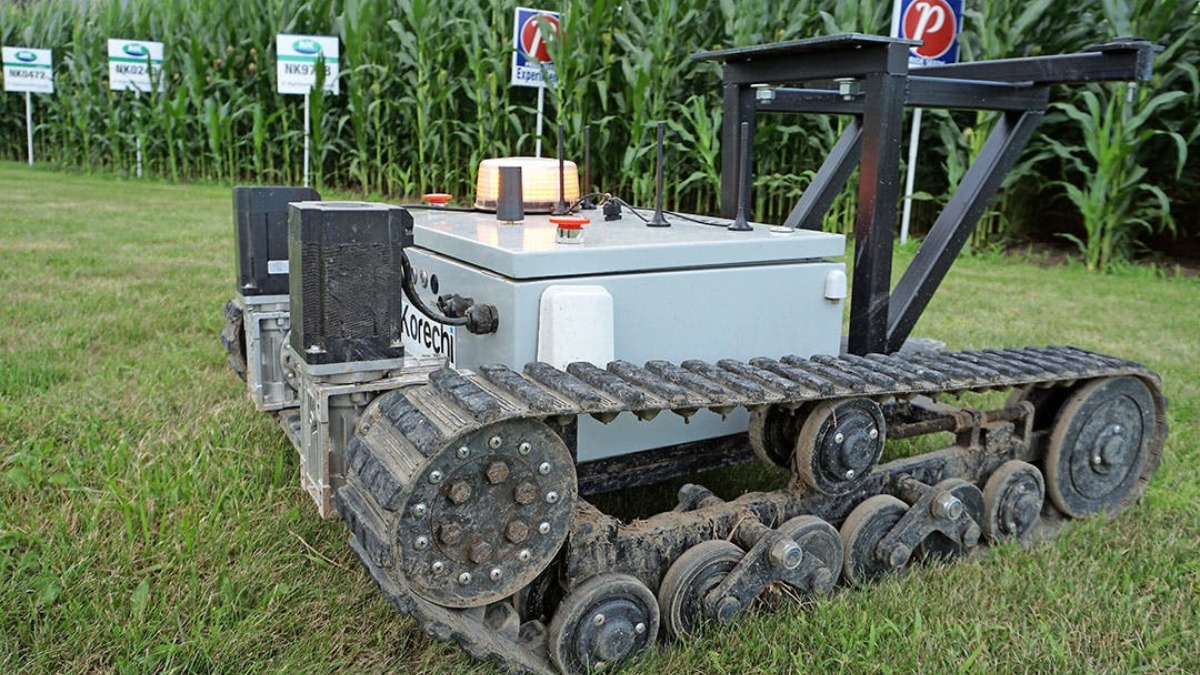
2020/09 - У Канаді презентували прототип роботизованої платформи для сільського господарства
Канадська компанія Korechi Innovations презентувала прототип роботизованої платформи RoamIO, призначеної для виконання різноманітних сільськогосподарських робіт.
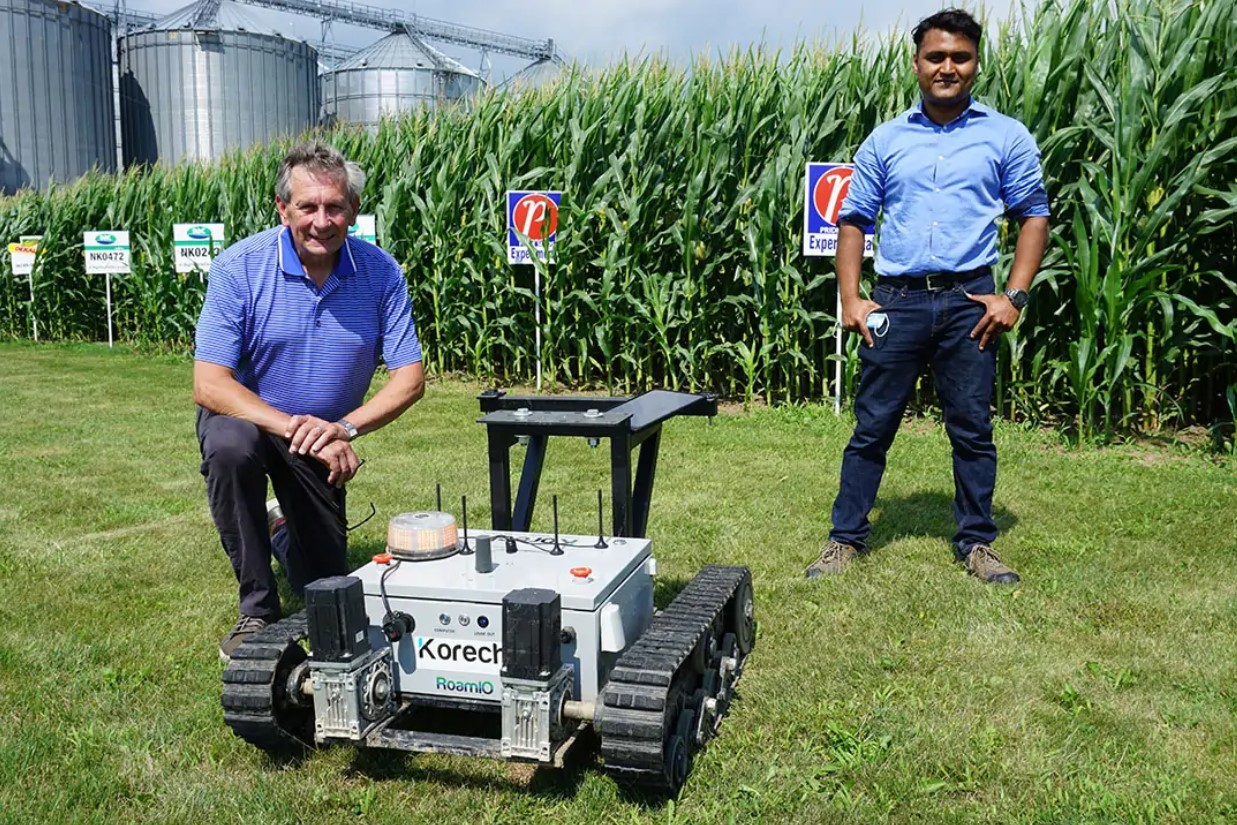
2020/08 - RoamIO Autonomous Robot Improves Employee Efficiency
Ontario ag-service company Haggerty Creek uses small, adaptable robot to complete time-consuming tasks. Small autonomous technologies are being used to improve work efficiency at Haggerty Creek Ltd., a grain elevator and farm service provider in Southwestern Ontario.

2020/07 - Korechi equipa su robot RoamIO con las sembradoras APV
Con el accesorio, la plataforma autónoma multifunción también puede ser empleada para la siembra de cultivos en suelos pesados. La startup canadiense Korechi Innovations le incorporó a su robot RoamIO una sembradora de la marca austríaca APV.

2020/07 - Agriculture technology incubators evolve during pandemic
Global farm technology investment funding hit an all-time high in 2019 of $4.9 billion U.S. According to the 2020 Farm Tech investing report by AgFunder, that’s an increase of 6.8 per cent over the year before, and a rise of 370 per cent since AgFunder first began tracking these statistics in 2012.
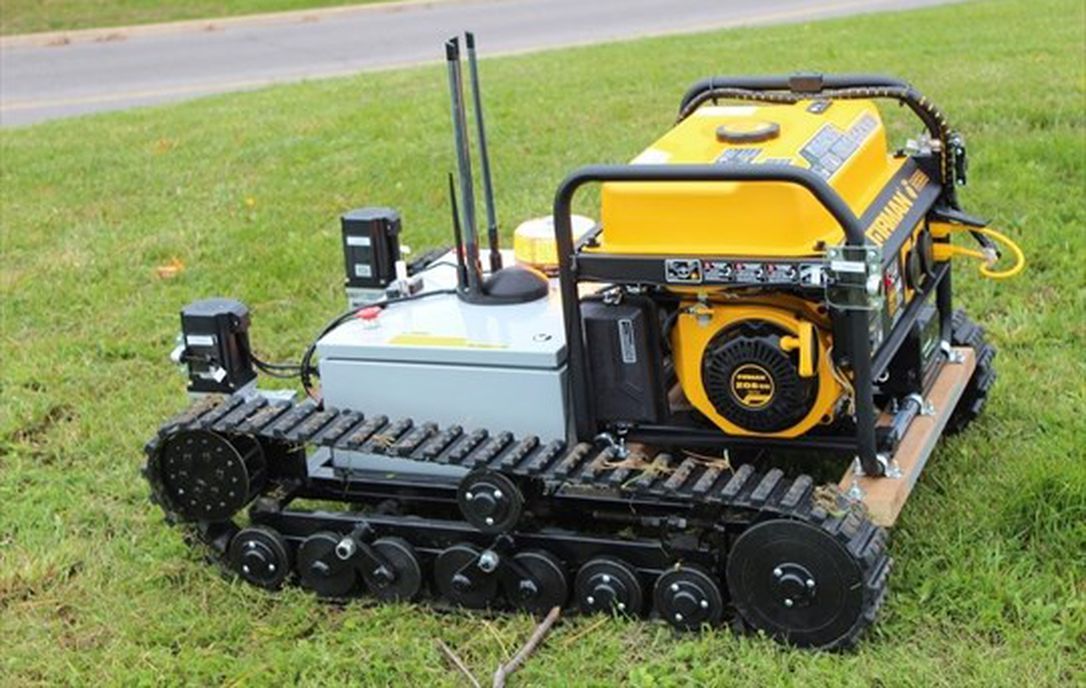
2020/06 - Feds help Niagara College with $94,000 vineyard research tool
The federal government has provided Niagara College with nearly $100,000 for new technology to help students and the wine industry with research and crop management.
2020/05 - Robots are coming to a farmer’s field near you
With nearly four decades of farming under his belt, Chuck Baresich has experienced his share of bugs. Now, the general manager of Haggerty Creek Ltd. is preparing to deal with an entirely new kind of bug as he, his brother and their father embark on the next generation of farming as the first in Ontario to use the autonomous farm machine called DOT.
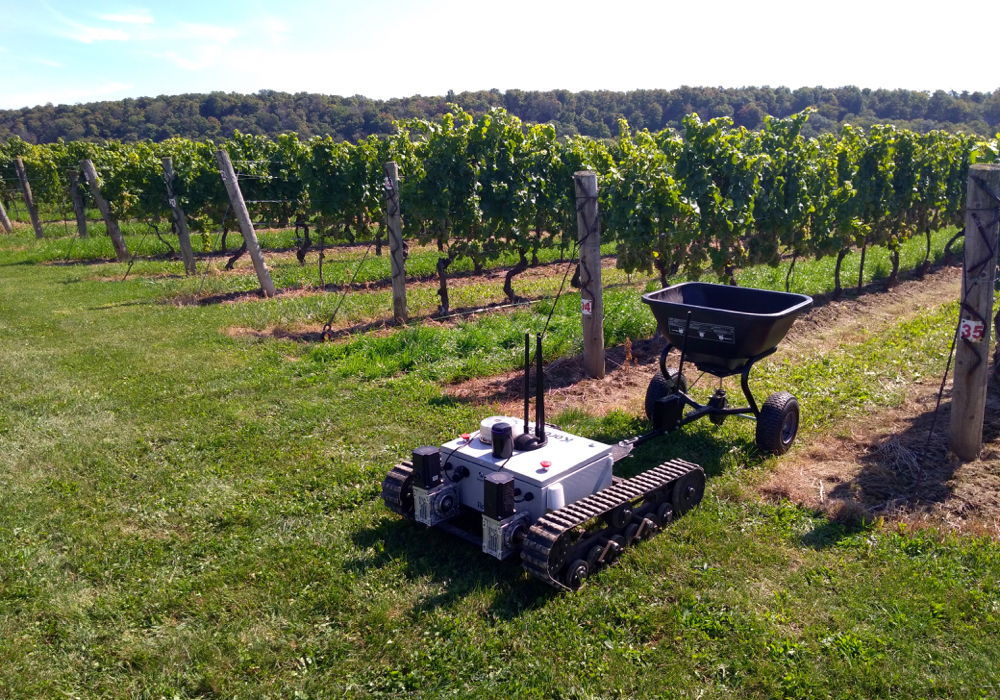
2020/01 - Robot Automates Hard-to-Fill Jobs in Agriculture and Turf
A local start-up has developed a compact, rugged autonomous robot that can automate a wide range of agricultural tasks, like soil sensing, applying inputs, and harvest yield prediction for grapes.

2019/11 - Korechi Accepted to Google Cloud for Startups
Korechi is exhilarated to be accepted to Google Cloud for Startups

2019/11 - Korechi Accepted to NVIDIA Inception Programme
Korechi is thrilled to be accepted into Nvidia AI Inception Program! We look forward to making AI on robots a staple in farming and turfcare.

2019/10 - Korechi Accepted to Premium Tier of Startup with IBM
Korechi is excited to be accepted into the premium tier of #StartupWithIBM.
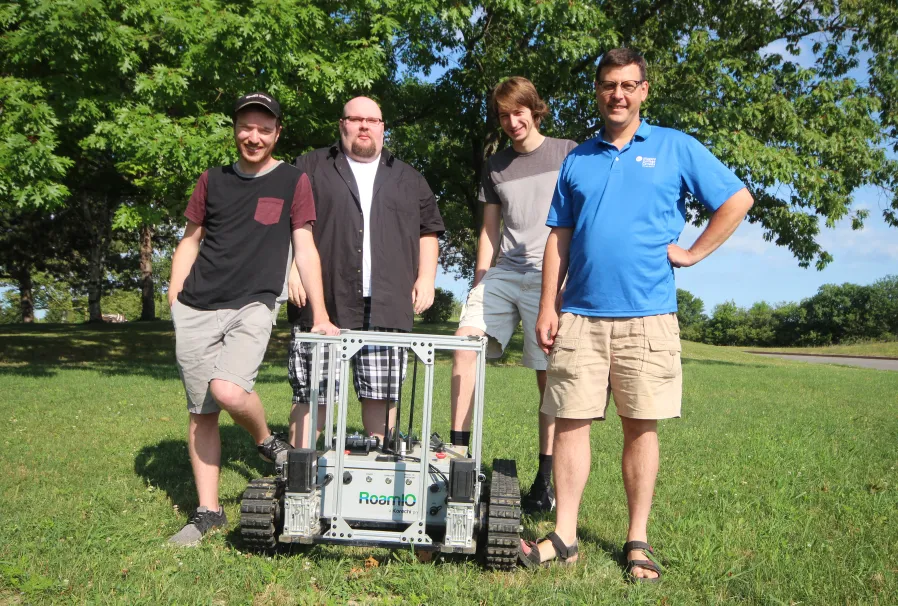
2019/07 - Artificial Intelligence in the vineyards?
Niagara College is at the forefront of agricultural robotics technology, with its complement of aerial drones and enterprise-level software systems. Now a 400-lb remotely operated rover, named RoamIO Jumbo, is undergoing field testing to refine high-precision engineering onboard that will help accurately predict vineyard yield estimates for grape growers.

2019/06 - The Right Place at the Right Time
Back in April our client Korechi Innovations Inc. had the great opportunity of having their product showcased live on CityLine TV. Their product RoamIO was presented on the show by Frank Ferragine AKA “Frankie Flowers” who is known for his expertise in gardening and Tracy Moore, the show’s permanent host since 2008. RoamIO is an autonomous robot enabled with artificial intelligence and high-precision spatial awareness to automate the most mundane tasks in turf and farm care with a high degree of reliability.
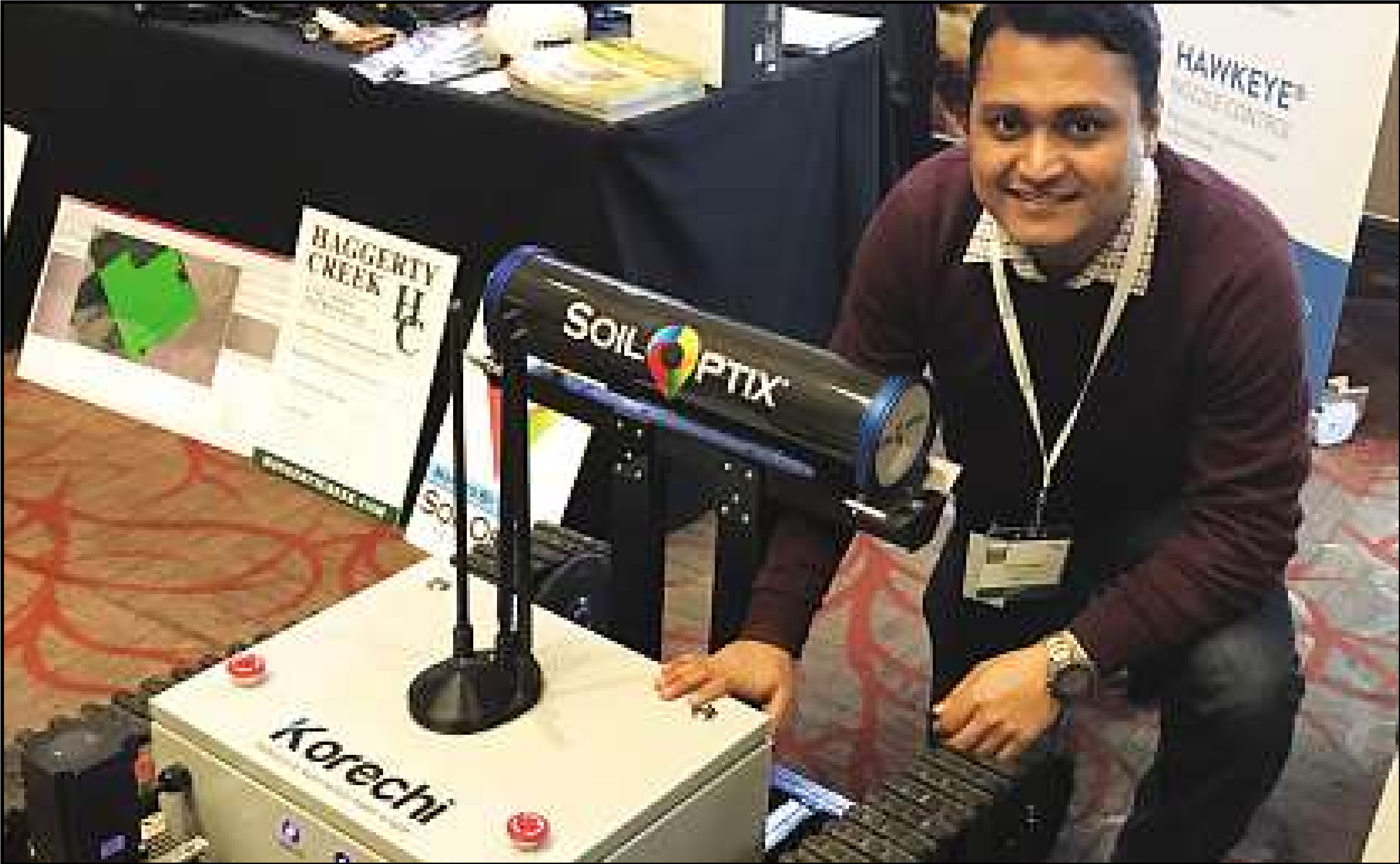
2019/03 - Robot Builder Wants to Put Canada on the Map
Sougata Pahari is a numbers kind of person. There are the numbers, for instance, that drew him to Canada - two million fresh-water lakes, more than the rest of the world combined; 9,000 trees per Canadian, the most in the world; Canada's top 10 rankings on the World Happiness Index and the prosperity index.

2019/01 - Game Changer: Sougata Pahari, Co-Founder & CEO, Korechi Innovations Inc.
Two months after moving to Canada from Italy in March of 2016, Sougata Pahari co-founded Korechi through the incubation process.
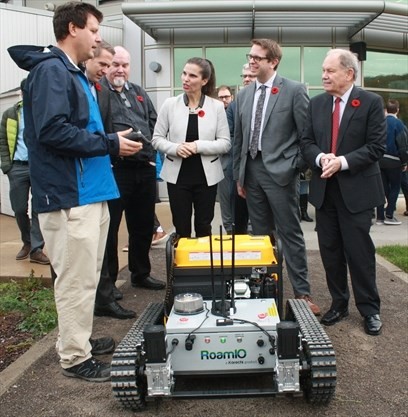
2018/11 - Smart farming the way of the future
Oh, RoamIO, oh RoamIO, wherefore art thou RoamIO? With apologies to Shakespeare, this RoamIO is a remote-controlled land rover that is more likely to be found trolling through vineyards at Niagara College’s teaching winery than below a balcony wooing its love.

2018/11 - 尼亚加拉学院的精准农业计划得到了联邦政府的大力资助
哦,RoamIO,哦RoamIO,为什么你是RoamIO? 对于莎士比亚的道歉,这款RoamIO是一款遥控陆地车,更有可能在尼亚加拉学院教学酒庄的葡萄园里徘徊,而不是在阳台上寻求爱情。
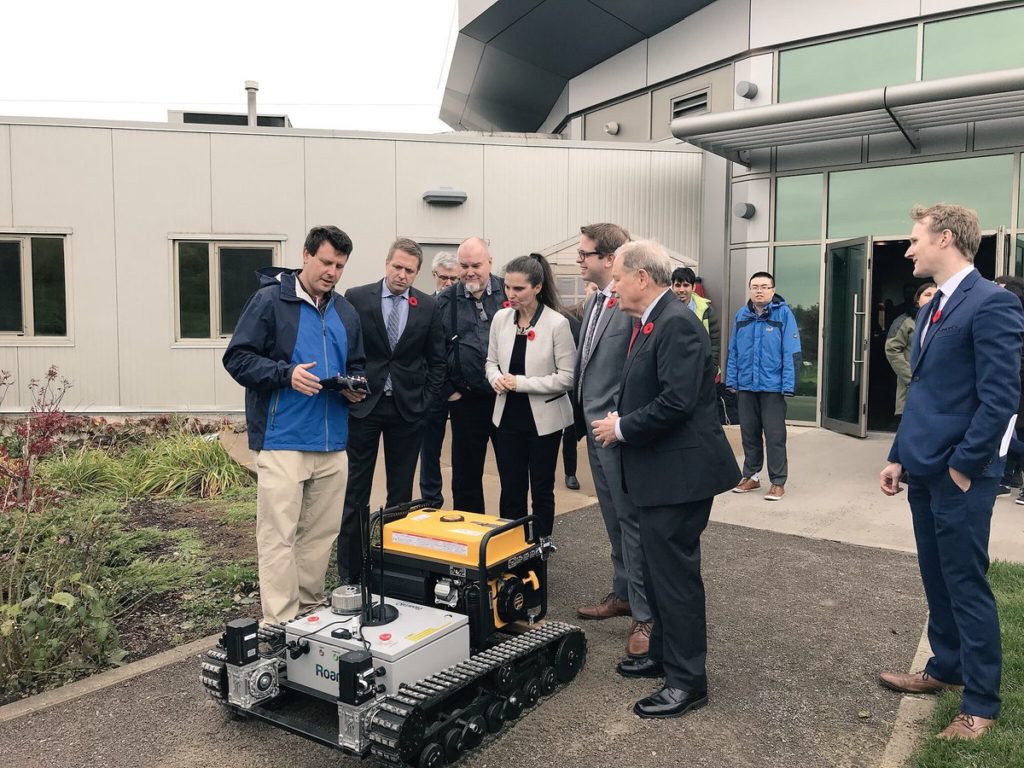
2018/11 - NSERC GRANT FOR SMART FARMING TECHNOLOGY ADVANCES NC’S PRECISION AG STRATEGIES TO HELP INDUSTRY
There’s a new member of the team at Niagara College’s Agriculture & Environmental Technologies Innovation Centre. It goes by the name RoamIO Jumbo, and it is an advanced, rugged land rover, able to patrol vineyard rows with ease, helping farmers increase profitability or even save their crop from damaging weather.
